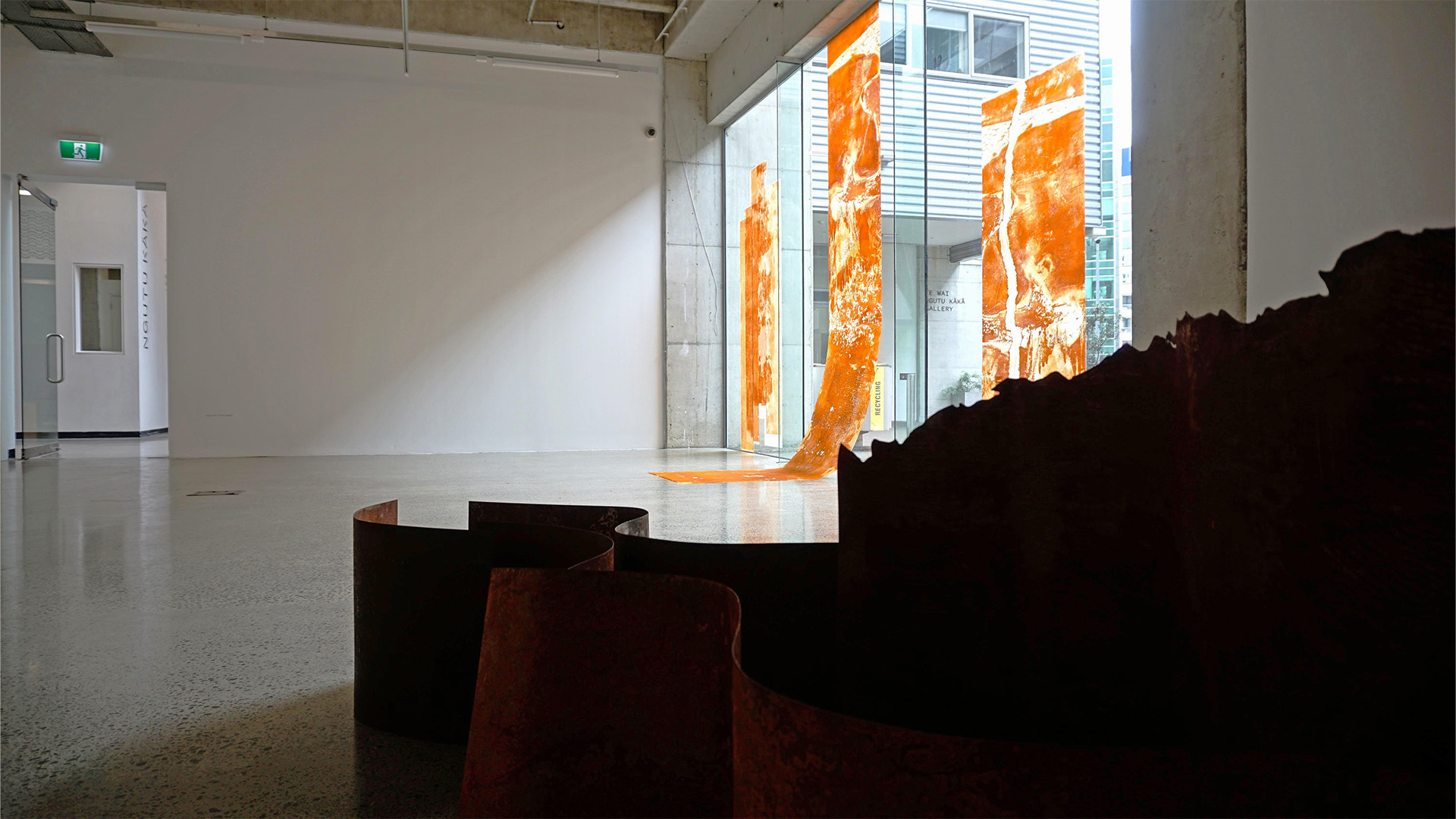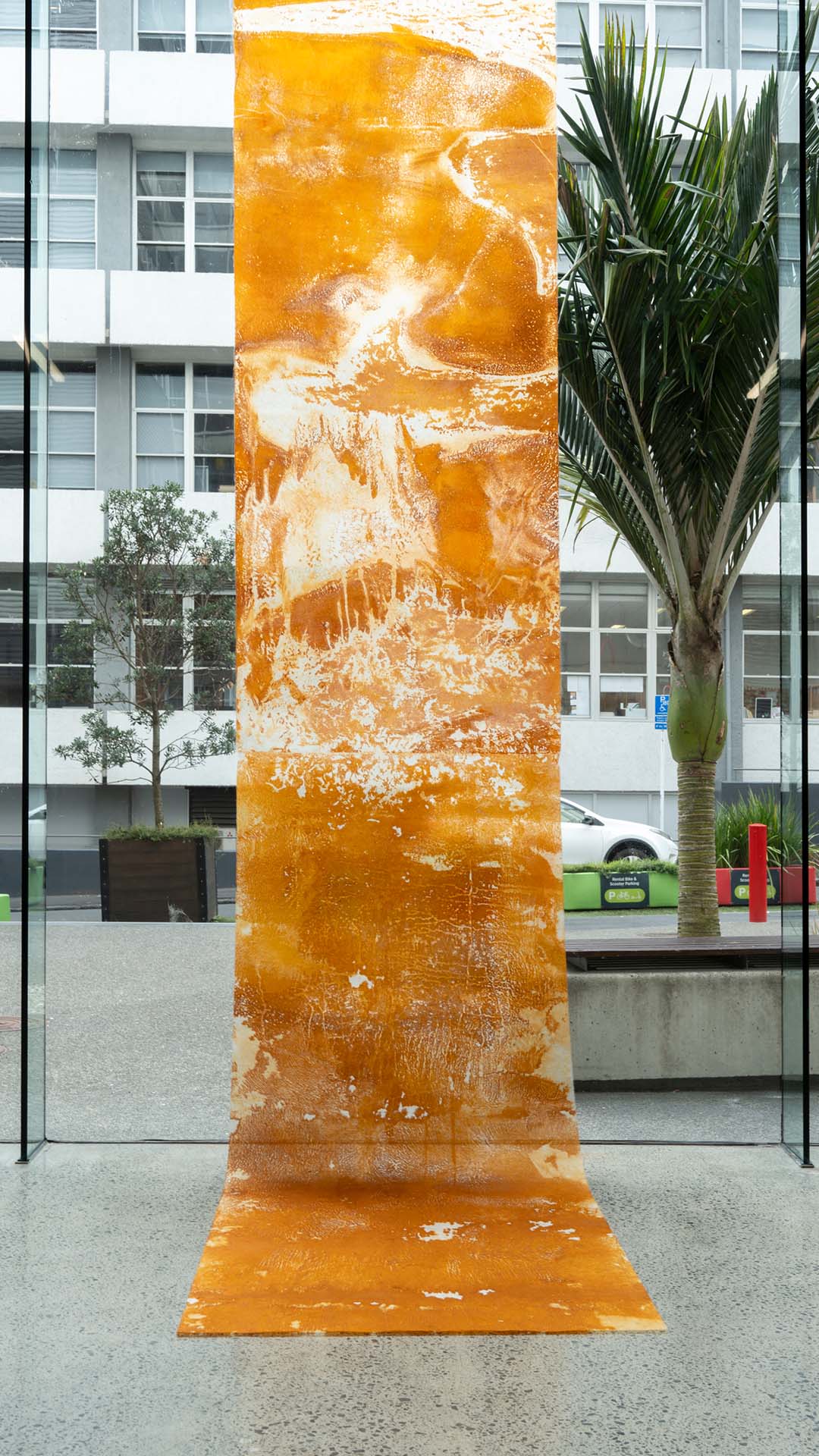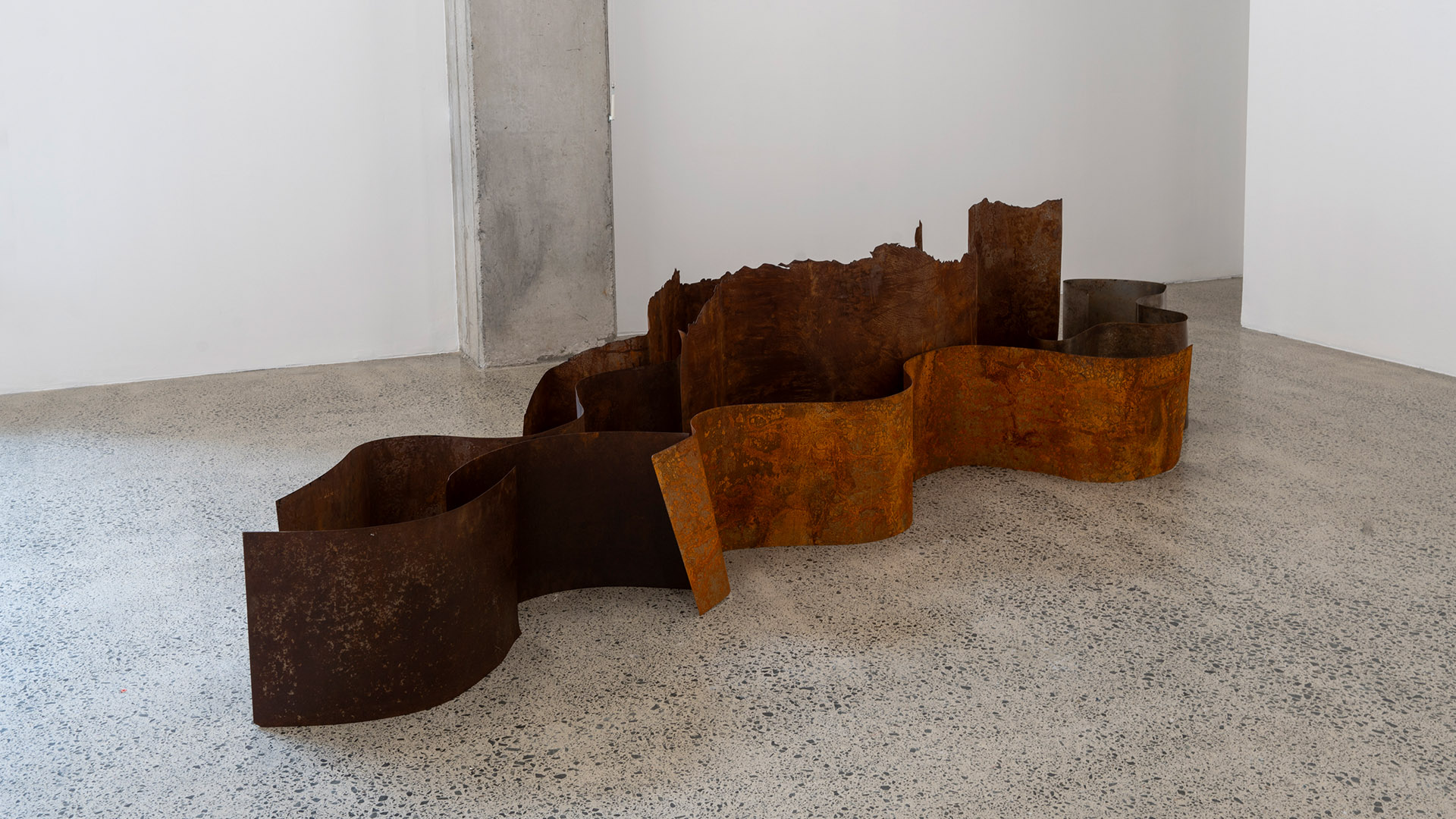

Responding to Site in a Print-Based Installation Practice
In my research, I examine encounters with sites through traces of human experience, exploring how I can respond to a site via my print-based installation practice. I am interested in how I can respond and connect to places based on material encounters. My project has developed from my engagement with mokuhanga (Japanese water-based woodblock printing). Concepts in mokuhanga (Japanese water-based print), such as the direct translation of the matrix (e.g. the grain of the wooden plate) and printing techniques that express flow and transition, inform this project's printing methods and conceptual framework. In developing this project, I have explored the rust monotype as both image and trace: as material and site. This has led me to the development of the ‘migratory archive’, a progression of works that record their experience of the site. In adopting the language of the scroll to explore the possibilities of its shape, I found that the form’s open-endedness and flow correspond with the concept of a migratory archive. The making on-site and in the exhibition space has an archival function, and the works remain under development while moving through the different stages of making and experiencing.



